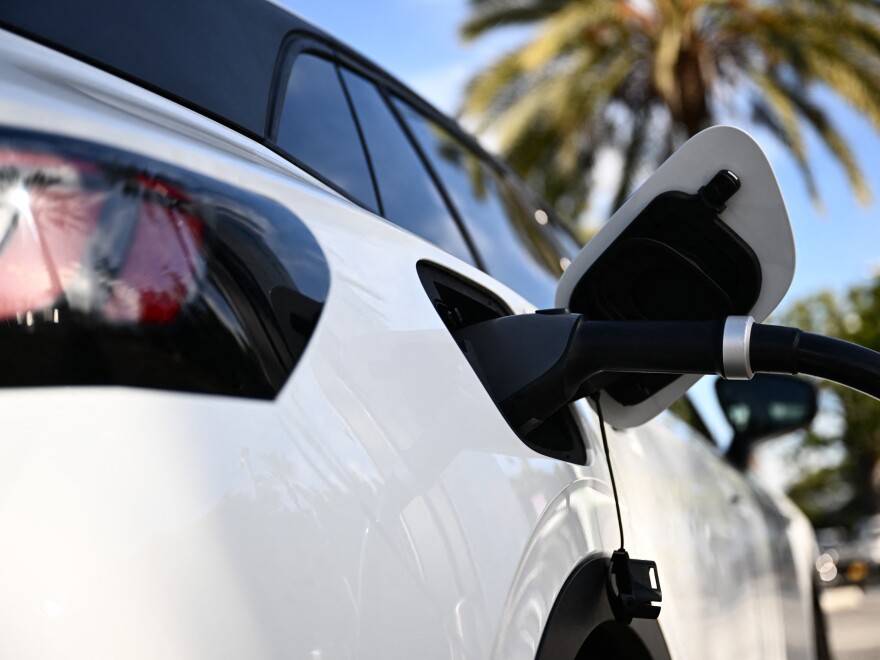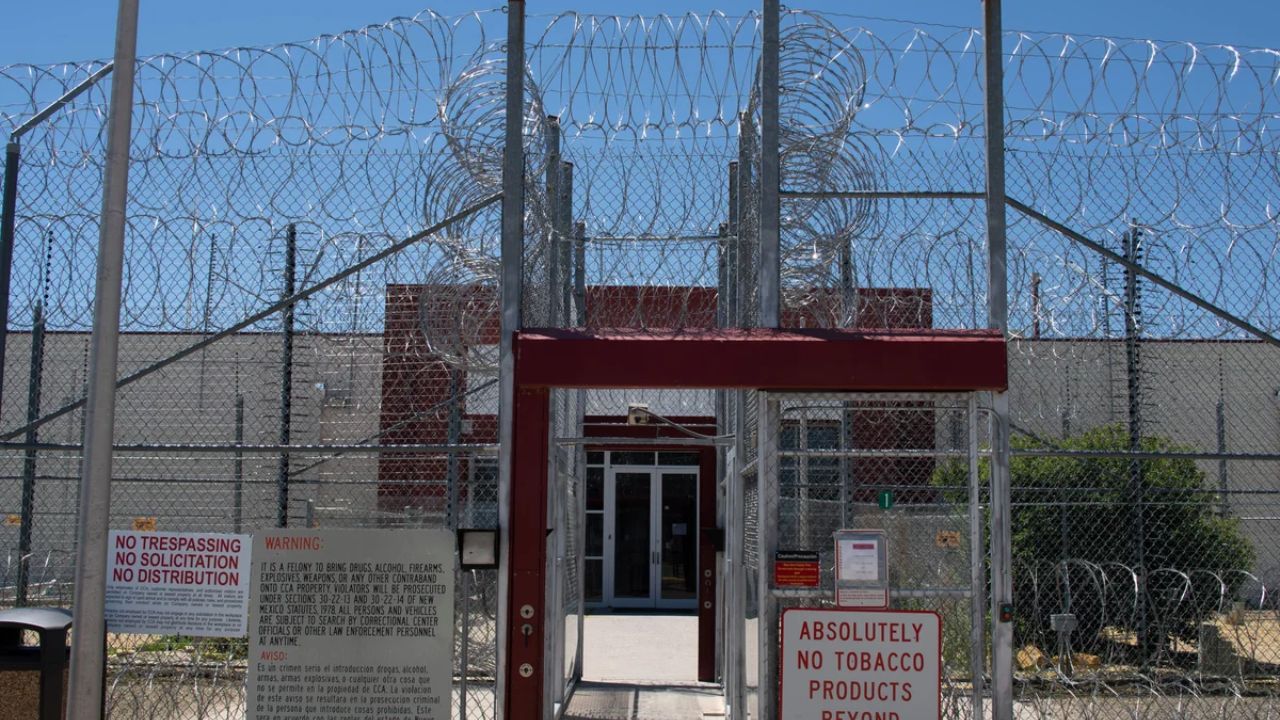Following a six-month funding block and a legal dispute with states, the Trump administration is reviving a federal program to finance the installation of high-speed EV chargers along freeways across the country.
The multibillion-dollar National Electric Vehicle Infrastructure (NEVI) program has been criticized by President Trump on numerous occasions for being wasteful. It was established in 2021 by a bipartisan act of Congress, and unlike many other climate policies of the Biden administration, Congress has not repealed the law.
Months went by with no word on when funding would resume after the Department of Transportation frozen the cash in February. A group of over a dozen states filed a lawsuit against the federal government, claiming that the administration was breaking the law and going against what Congress had decided. The states were granted a preliminary injunction by a federal judge.
By issuing fresh guidelines that will permit the monies to flow once more while eliminating some criteria from the Biden administration, the DOT has now begun the process of unfreezing the funds.
Although officials have not altered their opinions regarding the value of supporting fees, they are recognizing the separation of powers that grants Congress, not the executive branch, control over spending choices.
“We will respect Congress’ will and ensure that this program uses federal resources efficiently, even though I disagree with subsidizing green energy,” Transportation Secretary Sean Duffy wrote in a statement posted on the department’s website.
“Encouraging” news that the government is resuming the program was said by Colorado Attorney General Phil Weiser, who is spearheading the states’ lawsuit against the freeze. “It’s not an automatic end to the legal challenge,” he remarked.
“It is promising that we’re seeing some responses to our lawsuit and we’re seeing some effort to give us the money that Congress has mandated,” he stated to NPR. “We’re going to stay focused on making sure that all the monies that are promised across this multi-state coalition are, in fact, given out appropriately.”
Even as they grumble at the protracted delay, charging companies and EV advocates have cheered the end of the freeze and, in many cases, praised the simplification of the regulations.
“It’s ironic that this guidance was sold as cutting red tape, yet all it has accomplished is more than half a year of needless delay,” said Katherine Garc, who is the director of the Clean Transportation for All program at the Sierra Club.
Stripping out requirements
To meet the needs of long-distance EV drivers, the NEVI initiative allocated $5 billion for high-speed EV chargers along highway corridors. States have to submit a plan outlining where and how they will install chargers in order to get the cash. After the idea was approved, the federal government would reimburse the state transportation departments for their labor installing chargers with businesses.
The first chargers were made available to the public more than two years after the statute was passed. According to the EV States Clearinghouse data project, as of August 16, only 382 of the approximately 4,000 ports that have received funding are operational.The same statistics, however, indicates that after a sluggish start, funding allocations increased through 2024 until the Trump administration put a stop to it.
Both conservative opponents of the NEVI initiative and those EV supporters who favored the concept but wished it proceeded more quickly have criticized the rollout’s sluggish pace. According to a paper co-authored earlier this year by Alex Laska of the center-left think tank Third Way, the Biden-era NEVI program was plagued by “a morass of government red tape, roadblocks, and bureaucracy.”
The Trump administration’s new guideline eliminates certain restrictions that were added under the Biden administration. States will no longer have to consult underserved or rural regions when deciding where to put chargers. Benefits do not have to be allocated to underprivileged areas. They don’t have to show that they’ve taken safety and labor regulations into account or given minority-owned firms opportunity. Their plans won’t have to deal with evacuations, snow removal, or severe weather.
Additionally, charging stations won’t have to be within a mile of a freeway or fewer than 50 miles apart, which is an issue for several vast rural regions. States will have more latitude in deciding where to put chargers.
NPR asked the DOT for an interview, but the agency did not respond. However, Duffy claimed that this new guidance will expedite the process in a statement that was placed on the department’s website. “If Congress is requiring the federal government to support charging stations, let’s cut the waste and do it right,” he stated. “Despite their assurances, the Biden-Buttigieg Administration did not deliver EV chargers. Our updated NEVI guideline reduces red tape and facilitates governments’ effective deployment of this infrastructure.
Mixed reviews from the EV charger world
EV enthusiasts and charging firms have praised several of these changes, especially the freedom regarding site location.
“We appreciate the Department’s overall efforts to cut red tape,” commented Levi Kamolnick, federal policy director at CALSTART, a nonprofit organization that promotes clean transportation by collaborating with governments and businesses. “Streamlining the program will unlock more financial gains including good jobs.”
In a statement, the executive director of the nonprofit advocate for electric vehicles, the Electrification Coalition, said he was “encouraged by the Department’s commitment to removing unnecessary barriers.”
“We’re optimistic,” says Ryan McKinnon, spokesperson for the Charge Ahead partnership, which advocates for merchants and gas stations looking to install chargers. “They sort of cut through a lot of red tape that had slowed down the original program.” He claims that states with large open spaces, like Wyoming and Montana, will benefit most from the new guidelines.
Removing certain restrictions won’t, of course, remove the need to locate sites, negotiate with builders, and obtain permits—all of which require time.
In the realm of EV chargers, there is also a recurring theme: Although consumers are not opposed to the modifications to the guidelines, they are annoyed by the inconvenience and delay they produced.
Third Way’s Alex Laska, who had been a harsh critic of the Biden program’s inefficiencies, had mixed feelings about the Trump administration’s changes. He pointed out that there are still various types of “red tape,” such as specifications on the kind of charger.
Furthermore, it won’t genuinely save time or effort because other standards were removed after states had finished the work necessary to achieve them.
The move is “kind of a nothingburger,” he says, other from easing the location’s requirements. “This guidance was not worth holding up the program for, you know, now over half a year.”
Many projects that may have been approved this year were hampered by the freeze, according to Andrew Bennett, CEO of DRIIVZ, a business that develops software for charging stations.
Although private funding has been used to build chargers in the interim, Bennett claims that this is insufficient and that “we need about six times more just to keep up.”
Copyright 2025 NPR






